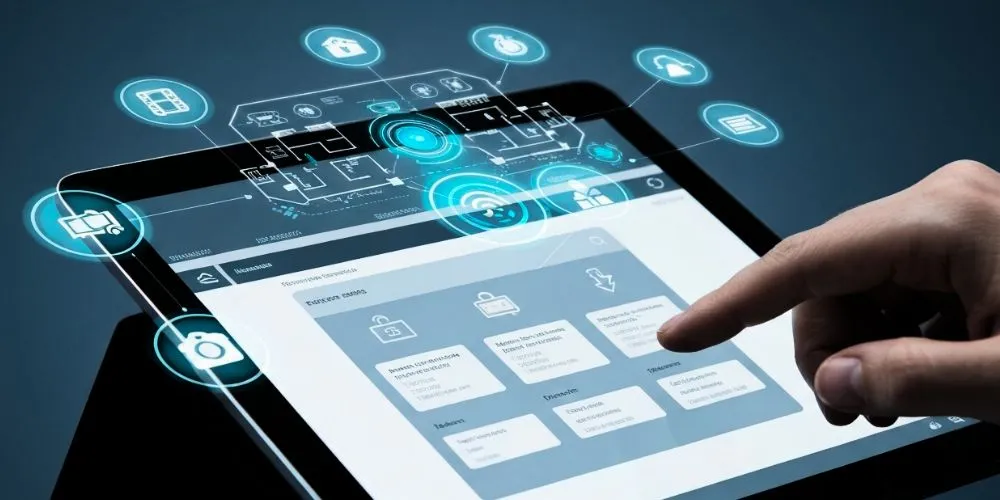In business operations, efficient facilities management is instrumental in maintaining a conducive and productive work environment. Leveraging technology for facilities management streamlines processes and contributes to cost savings and improved resource utilization. This article serves as a comprehensive guide, offering insights and strategies to procure technology for facilities management effectively.
Understanding the Role of Facilities Management Technology
Before delving into the procurement process, it’s crucial to understand the multifaceted role of technology in facilities management. Modern facilities management technology goes beyond basic maintenance tools; it includes advanced solutions for space optimization, asset tracking, energy management, and overall operational efficiency.
Conduct a Comprehensive Facilities Needs Assessment
Initiate the procurement process by conducting a thorough needs assessment of your organization’s facilities. Identify pain points, maintenance requirements, space utilization challenges, and any other areas where technology can provide solutions. Understanding the specific needs of your facilities forms the foundation for selecting the most suitable technology solutions.
Define Clear Objectives for Facilities Management
Establish clear objectives for implementing technology in facilities management. Whether it’s reducing energy consumption, improving maintenance efficiency, or optimizing space utilization, clearly defined goals guide the selection and customization of technology solutions to align with your organization’s strategic priorities.
Engage Stakeholders in the Decision-Making Process
Include key stakeholders in the decision-making process. Engage facilities managers, maintenance staff, IT professionals, and other relevant personnel to ensure that the chosen technology meets the diverse needs of the entire organization. Stakeholder input is crucial for gaining buy-in and fostering a collaborative approach to facilities management.
Strategic Procurement of Facilities Management Technology
Effective procurement involves strategic planning and thorough evaluation of available solutions.
Establish a Cross-Functional Procurement Team
Form a cross-functional procurement team with representatives from facilities management, IT, finance, and other relevant departments. This team will conduct market research, evaluate potential vendors, and select the technology solution that best aligns with organizational needs.
Conduct Thorough Market Research
Before selecting a technology vendor, conduct thorough market research to identify potential solutions. Consider factors such as vendor reputation, industry expertise, scalability, and the ability to meet specific facilities management requirements. Leverage online reviews, vendor demonstrations, and industry reports to inform your decision.
Evaluate Vendor Demonstrations and References
Request vendor demonstrations to assess the usability and functionality of facilities management solutions. Additionally, seek references from organizations like yours that successfully implement the technology. Learning from the experiences of other users provides valuable insights into the system’s real-world performance.
Customization and Integration Strategies
Customizing and integrating facilities management solutions with existing systems is critical for seamless functionality.
Assess the Need for Customization
Evaluate the customization needs based on your organization’s unique facilities management requirements. Customization may involve tailoring maintenance schedules, optimizing space management features, or integrating with specific databases. Clearly define customization needs and assess the flexibility of the chosen facilities management solution.
Plan for Integration with Existing Systems
Develop a comprehensive plan for integrating the chosen solution with the existing IT infrastructure. Ensure compatibility with databases, financial systems, and other relevant applications. Integration planning minimizes disruptions during implementation and ensures facilities management processes align seamlessly with existing operations.
Invest in Employee Training
Invest in training programs for facilities management staff and other personnel responsible for using the technology. Ensure that staff are proficient in utilizing the features of the selected solution. Training enhances the efficiency of facilities management processes and contributes to the overall success of the technology implementation.
Implementation and Testing Protocols
Smooth implementation and rigorous testing are essential for successfully integrating facilities management technology.
Develop a Phased Implementation Plan
Create a phased implementation plan to roll out the technology gradually. Start with core functionalities and progressively introduce additional features. A phased approach minimizes disruption and allows continuous refinement based on user feedback and system performance.
Conduct Rigorous Testing at Each Phase
Rigorous testing is crucial at each implementation phase—test facilities management processes for functionality, performance, and data accuracy. Address any issues promptly to ensure a stable and reliable system. User acceptance testing (UAT) involving end-users validates that the technology meets their operational needs.
Establish Key Performance Indicators (KPIs)
Define Key Performance Indicators (KPIs) to measure the success of technology implementation in facilities management. These indicators may include improved maintenance response times, energy cost reductions, or enhanced space utilization. Regularly monitor and evaluate KPIs to assess the ongoing impact of the technology on organizational performance.
Ongoing Support and Optimization
Post-implementation, providing ongoing support and optimizing the facilities management system are critical for sustained success.
Establish a Support Structure
Establish a robust support structure, including helpdesk services and access to vendor support. A responsive support system addresses user queries, troubleshoots issues, and ensures that the facilities management technology remains operational.
Implement Continuous Improvement Processes
Continuously assess the performance of the technology and identify areas for improvement in facilities management processes. Implement processes for regular updates, patches, and system optimizations. Staying abreast of new features and functionalities provided by the vendor allows your organization to leverage the latest advancements.
Gather User Feedback and Iterate
Encourage end-user feedback and use this input to iterate on the facilities management technology. Address user concerns, identify areas for enhancement, and collaborate with the vendor to implement updates that align with evolving business needs. User satisfaction is crucial for long-term success in facilities management.
Conclusion
Procuring technology for facilities management is a strategic initiative that requires careful planning and consideration. Organizations can establish a robust and efficient facilities management system by understanding the importance of facilities management technology, engaging stakeholders, strategically procuring the technology, customizing and integrating solutions, implementing and testing with precision, and providing ongoing support and optimization.
Facilities are integral to organizational success, and leveraging technology enhances their functionality and sustainability. Stay proactive, stay collaborative, and let your facilities management technology be the cornerstone of operational excellence in the ever-evolving business landscape.





